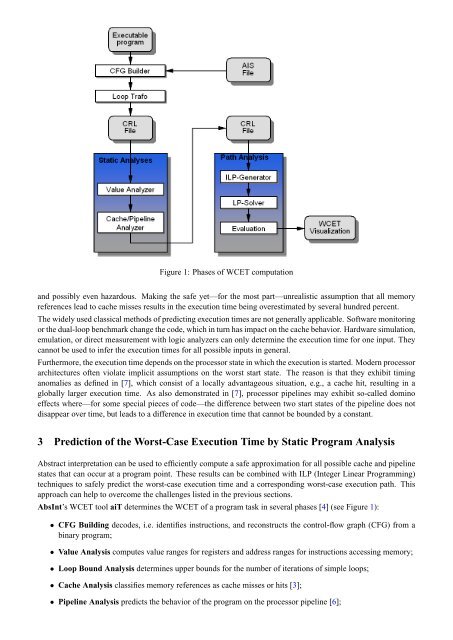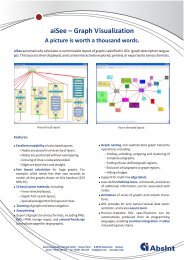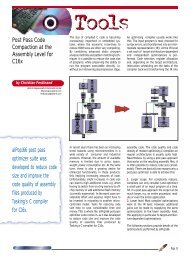Worst-Case Execution Time Prediction by Static Program ... - Absint
Worst-Case Execution Time Prediction by Static Program ... - Absint
Worst-Case Execution Time Prediction by Static Program ... - Absint
You also want an ePaper? Increase the reach of your titles
YUMPU automatically turns print PDFs into web optimized ePapers that Google loves.
Figure 1: Phases of WCET computation<br />
and possibly even hazardous. Making the safe yet—for the most part—unrealistic assumption that all memory<br />
references lead to cache misses results in the execution time being overestimated <strong>by</strong> several hundred percent.<br />
The widely used classical methods of predicting execution times are not generally applicable. Software monitoring<br />
or the dual-loop benchmark change the code, which in turn has impact on the cache behavior. Hardware simulation,<br />
emulation, or direct measurement with logic analyzers can only determine the execution time for one input. They<br />
cannot be used to infer the execution times for all possible inputs in general.<br />
Furthermore, the execution time depends on the processor state in which the execution is started. Modern processor<br />
architectures often violate implicit assumptions on the worst start state. The reason is that they exhibit timing<br />
anomalies as defined in [7], which consist of a locally advantageous situation, e.g., a cache hit, resulting in a<br />
globally larger execution time. As also demonstrated in [7], processor pipelines may exhibit so-called domino<br />
effects where—for some special pieces of code—the difference between two start states of the pipeline does not<br />
disappear over time, but leads to a difference in execution time that cannot be bounded <strong>by</strong> a constant.<br />
3 <strong>Prediction</strong> of the <strong>Worst</strong>-<strong>Case</strong> <strong>Execution</strong> <strong>Time</strong> <strong>by</strong> <strong>Static</strong> <strong>Program</strong> Analysis<br />
Abstract interpretation can be used to efficiently compute a safe approximation for all possible cache and pipeline<br />
states that can occur at a program point. These results can be combined with ILP (Integer Linear <strong>Program</strong>ming)<br />
techniques to safely predict the worst-case execution time and a corresponding worst-case execution path. This<br />
approach can help to overcome the challenges listed in the previous sections.<br />
AbsInt’s WCET tool aiT determines the WCET of a program task in several phases [4] (see Figure 1):<br />
• CFG Building decodes, i.e. identifies instructions, and reconstructs the control-flow graph (CFG) from a<br />
binary program;<br />
• Value Analysis computes value ranges for registers and address ranges for instructions accessing memory;<br />
• Loop Bound Analysis determines upper bounds for the number of iterations of simple loops;<br />
• Cache Analysis classifies memory references as cache misses or hits [3];<br />
• Pipeline Analysis predicts the behavior of the program on the processor pipeline [6];





